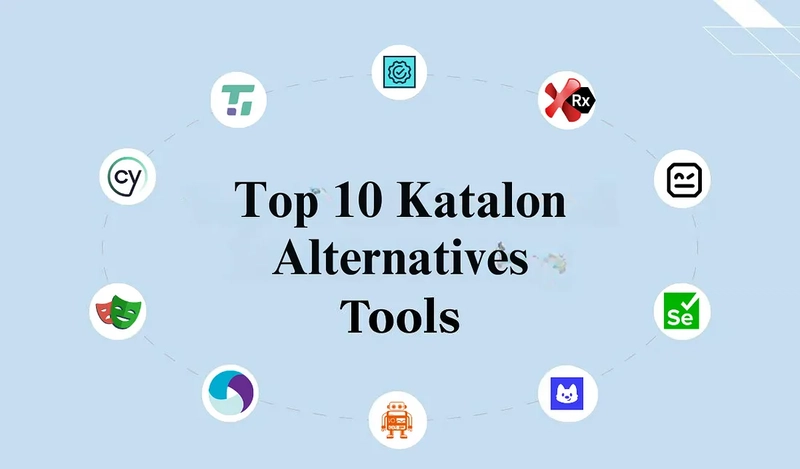That €20,000 Cookie: A Guide to GDPR Compliance for Website Owners
It started with a cookie. Literally. A small tech startup in Berlin thought they had it all figured out. Sleek website, cool product, a steady trickle of users. But what they didn’t see coming was a GDPR violation complaint—triggered by a missing cookie consent banner. The result? A €20,000 fine and weeks of legal back-and-forth. Sounds extreme? Not if you’re ignoring data privacy laws. Since the General Data Protection Regulation (GDPR) went live in 2018, websites that reach or serve users in the EU are subject to a very high standard of data transparency and user permission. And while large companies have lawyers to deal with this, developers, marketers, and small business owners are clueless. Let's fix that. What is GDPR—and Why Should You Care? GDPR is a regulatory framework developed to provide European citizens with control over how their data comes to be collected, stored, and utilized online. Even if you are not in Europe, if your website gets EU traffic, you are supposed to comply. In case you fail to comply, there are substantial fines (up to €20 million or 4% of global revenue, whichever is higher). Common GDPR Mistakes You May Be Committing That's where most sites fail: Thinking that a privacy policy is enough A static privacy page is not enough if your site is actively collecting personal data. No cookie consent If your site employs tracking cookies (analytics, ads, social plugins), users need to consent before being dropped. Automated opt-ins Pre-checked boxes for newsletters? That's a no-no with GDPR. Not honoring data access requests Users should be able to request, change, or delete personal data—and you need to have a system in place for this. 5 Actionable Steps to Get Your Website GDPR Compliant Let's get this ship sailing in the right direction Here are hands-on steps to get you started: Add a cookie consent banner (with real control) Use tools like Cookiebot, Termly, or Osano to let users accept or refuse cookies by category. Update your privacy policy Make it say clearly what you're collecting, why, and how long you retain it. No techno mumbo-jumbo. Make it accessible. Double opt-in on email subscriptions This ensures consent is verified and traceable. Secure your data Employ SSL, limit exposure to sensitive information, and run regular audits of your plugins and third-party operations. Implement a data request mechanism Let people contact you so they can view, edit, or delete their data—and respond within 30 days. Real Talk: GDPR Isn't About Compliance—It's About Trust People are more privacy-conscious than ever. By respecting user data, you're not just avoiding fines—you're building trust. And trust equals clicks, shares, and conversions. Let's Get Interactive Did you check your website's GDPR compliance recently? Leave a comment: Yes, I'm good! Working on it. Wait… I need help. Final Thought: Don't let something as small as a cookie cost you your reputation—or your business. If you found this post useful, kindly share it with someone in need. You may save them €20,000.

It started with a cookie. Literally.
A small tech startup in Berlin thought they had it all figured out. Sleek website, cool product, a steady trickle of users. But what they didn’t see coming was a GDPR violation complaint—triggered by a missing cookie consent banner. The result? A €20,000 fine and weeks of legal back-and-forth.
Sounds extreme? Not if you’re ignoring data privacy laws.
Since the General Data Protection Regulation (GDPR) went live in 2018, websites that reach or serve users in the EU are subject to a very high standard of data transparency and user permission. And while large companies have lawyers to deal with this, developers, marketers, and small business owners are clueless.
Let's fix that.
What is GDPR—and Why Should You Care?
GDPR is a regulatory framework developed to provide European citizens with control over how their data comes to be collected, stored, and utilized online. Even if you are not in Europe, if your website gets EU traffic, you are supposed to comply.
In case you fail to comply, there are substantial fines (up to €20 million or 4% of global revenue, whichever is higher).
Common GDPR Mistakes You May Be Committing
That's where most sites fail:
Thinking that a privacy policy is enough
A static privacy page is not enough if your site is actively collecting personal data.
No cookie consent
If your site employs tracking cookies (analytics, ads, social plugins), users need to consent before being dropped.
Automated opt-ins
Pre-checked boxes for newsletters? That's a no-no with GDPR.
Not honoring data access requests
Users should be able to request, change, or delete personal data—and you need to have a system in place for this.
5 Actionable Steps to Get Your Website GDPR Compliant
Let's get this ship sailing in the right direction
Here are hands-on steps to get you started:
Add a cookie consent banner (with real control)
Use tools like Cookiebot, Termly, or Osano to let users accept or refuse cookies by category.
Update your privacy policy
Make it say clearly what you're collecting, why, and how long you retain it. No techno mumbo-jumbo. Make it accessible.
Double opt-in on email subscriptions
This ensures consent is verified and traceable.
Secure your data
Employ SSL, limit exposure to sensitive information, and run regular audits of your plugins and third-party operations.
Implement a data request mechanism
Let people contact you so they can view, edit, or delete their data—and respond within 30 days.
Real Talk: GDPR Isn't About Compliance—It's About Trust
People are more privacy-conscious than ever. By respecting user data, you're not just avoiding fines—you're building trust. And trust equals clicks, shares, and conversions.
Let's Get Interactive
Did you check your website's GDPR compliance recently?
Leave a comment:
Yes, I'm good!
Working on it.
Wait… I need help.
Final Thought:
Don't let something as small as a cookie cost you your reputation—or your business.
If you found this post useful, kindly share it with someone in need. You may save them €20,000.




























![[Webinar] AI Is Already Inside Your SaaS Stack — Learn How to Prevent the Next Silent Breach](https://blogger.googleusercontent.com/img/b/R29vZ2xl/AVvXsEiOWn65wd33dg2uO99NrtKbpYLfcepwOLidQDMls0HXKlA91k6HURluRA4WXgJRAZldEe1VReMQZyyYt1PgnoAn5JPpILsWlXIzmrBSs_TBoyPwO7hZrWouBg2-O3mdeoeSGY-l9_bsZB7vbpKjTSvG93zNytjxgTaMPqo9iq9Z5pGa05CJOs9uXpwHFT4/s1600/ai-cyber.jpg?#)














































































































































![[The AI Show Episode 144]: ChatGPT’s New Memory, Shopify CEO’s Leaked “AI First” Memo, Google Cloud Next Releases, o3 and o4-mini Coming Soon & Llama 4’s Rocky Launch](https://www.marketingaiinstitute.com/hubfs/ep%20144%20cover.png)




































































































































































































![Rogue Company Elite tier list of best characters [April 2025]](https://media.pocketgamer.com/artwork/na-33136-1657102075/rogue-company-ios-android-tier-cover.jpg?#)







































































_Andreas_Prott_Alamy.jpg?width=1280&auto=webp&quality=80&disable=upscale#)





























































































![What’s new in Android’s April 2025 Google System Updates [U: 4/18]](https://i0.wp.com/9to5google.com/wp-content/uploads/sites/4/2025/01/google-play-services-3.jpg?resize=1200%2C628&quality=82&strip=all&ssl=1)










![Apple Watch Series 10 Back On Sale for $299! [Lowest Price Ever]](https://www.iclarified.com/images/news/96657/96657/96657-640.jpg)
![EU Postpones Apple App Store Fines Amid Tariff Negotiations [Report]](https://www.iclarified.com/images/news/97068/97068/97068-640.jpg)
![Apple Slips to Fifth in China's Smartphone Market with 9% Decline [Report]](https://www.iclarified.com/images/news/97065/97065/97065-640.jpg)

































































































































